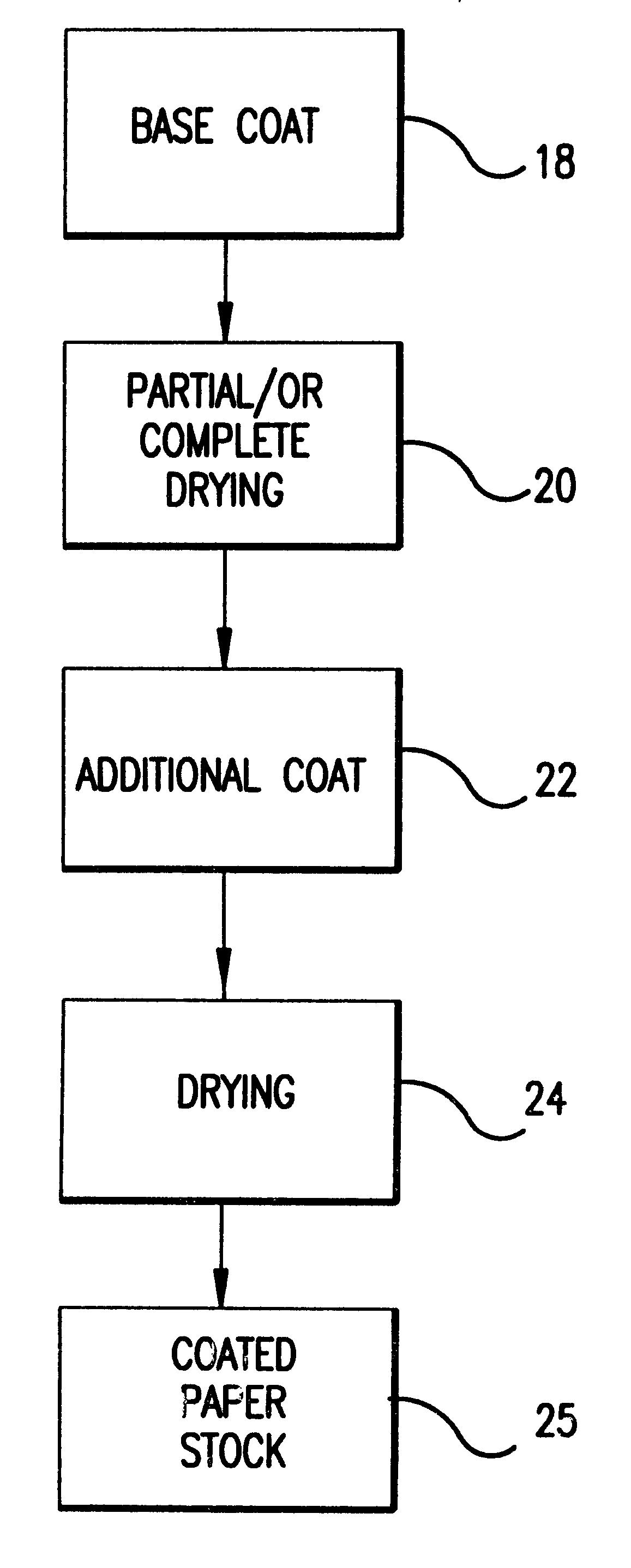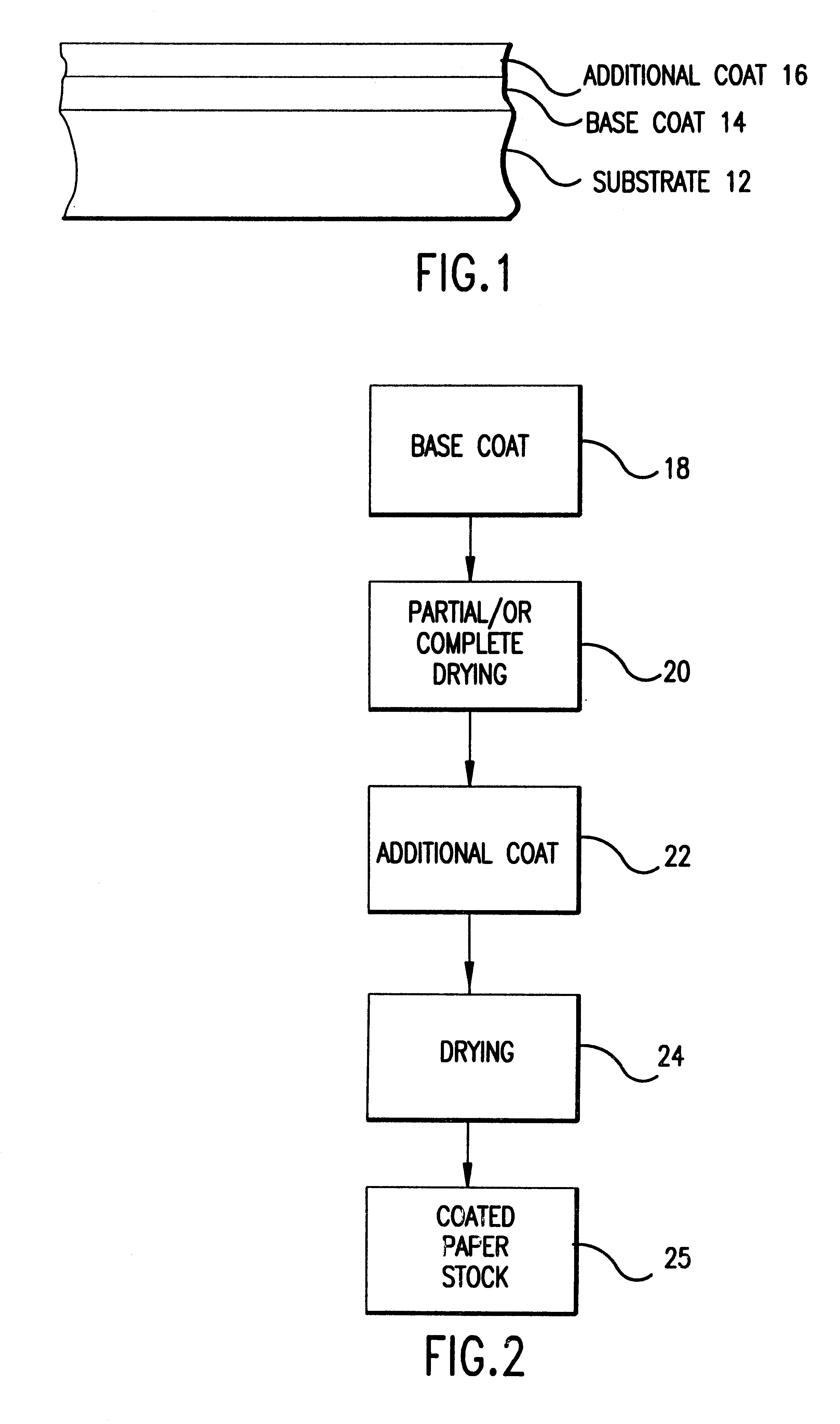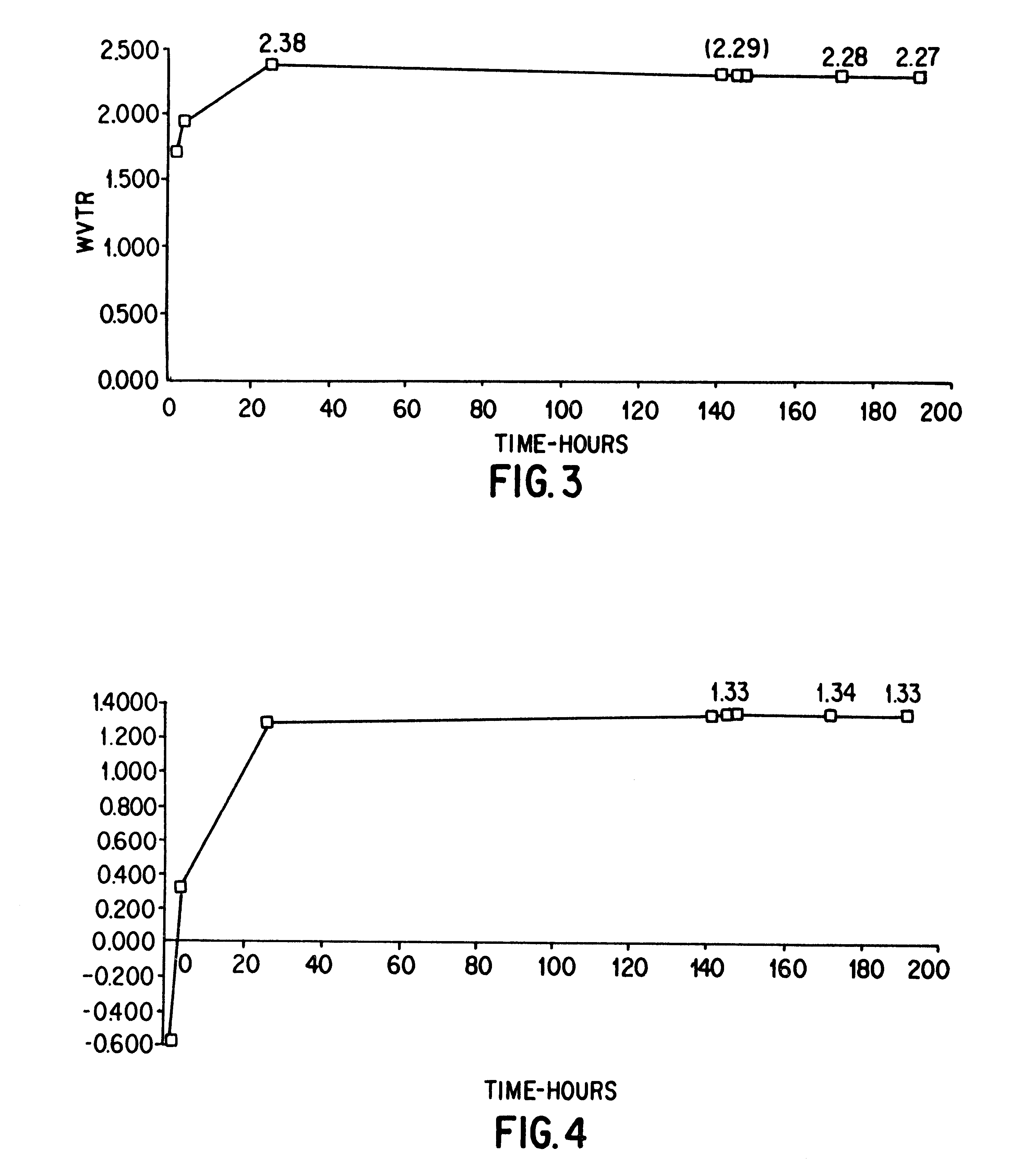Recyclable and repulpable ream wrap and related methods of manufacture
a ream wrap and ream technology, applied in the field of ream wrap and ream wrap and related methods of manufacture, can solve the problems of misfeeding and jamming in copy machines or printing presses, the inability to easily recycle multi-layer plastic film ream wraps, and the limited and costly recycling of packaging containing polyethylene films and wax coatings, etc., to reduce drying demands, reduce the penetration of additional coats into the substrate, and low viscosity
- Summary
- Abstract
- Description
- Claims
- Application Information
AI Technical Summary
Benefits of technology
Problems solved by technology
Method used
Image
Examples
example 1
Subtrate is a 50 lb / 3MSF bleached white kraft paper. The base coat comprises an acrylic modified poly(ethylacrylate) latex, (44% solids, viscosity of 250 to 450 cps), available as PRECOAT-44 by Michelman, Inc., 9080 Shell Road, Cincinnatti, Ohio, 45236-1299. The additional coats comprise either PRECOAT-44 or a polyvinylidene chloride latex, (50% solids, viscosity of 40 to 75 cps), available as Serfene.RTM.121 by Morton International Specialty Chemicals Group, 333 West Wacker Drive, Chicago, Ill., 60606-1292.
The base coat is applied to the substrate and results in dry add-on levels in the range of 2.0 to 3.5 lbs / 3MSF. A second coat comprising PRECOAT-44 was applied in a similar manner to the base coat layer and results in dry add-on levels in the range of 2.0 to 3.5 lbs / 3MSF. This second coat was partially dried by passing through hot air ovens set at 220-250.degree. F. followed by application of an additional coat comprising Serfene.RTM.121. This coating results in dry add-on levels...
example 2
The same materials and procedure as in Example 1 were used, except that the total coating weight on the substrate surface is 9.8 g / 3MSF.
FIG. 4 graphically illustrates the WVTR values as a function of time for the coated substrate in this example, and are also summarized below in Table I. The average WVTR for this coating is 1.3 g / 100 sq.in. / 24 hr.
example 3
Subtrate is a 50 lb / 3MSF recycled paper. The base coat comprises a water-based ethylene vinyl-acetate emulsion, (55% solids, viscosity of 250 to 450 cps), available as Airflex.RTM.100 HS by Air Products and Chemicals, Inc., Allentown, Pa., 18195. The additional coats comprise either Airflex.RTM.100 HS or a polyvinylidene chloride latex, (50% solids, viscosity of 40 to 75 cps), available as Serfene.RTM.121 by Morton International Specialty Chemicals Group, 333 West Wacker Drive, Chicago, Ill., 60606-1292.
The base coat is applied to the substrate and results in dry add-on levels in the range of 2.0 to 3.5 lbs / 3MSF. A second coat comprising Airflex.RTM.100 HS was applied in a similar manner to the base coat layer and results in dry add-on levels in the range of 2.0 to 3.5 lbs / 3MSF. This second coat was dried followed by application of an additional coat comprising Serfene.RTM.121. This coating results in dry add-on levels in the range of 3.5 to 5.0 lbs / 3MSF. The coated substrate is pas...
PUM
| Property | Measurement | Unit |
|---|---|---|
| thickness | aaaaa | aaaaa |
| thicknesses | aaaaa | aaaaa |
| weights | aaaaa | aaaaa |
Abstract
Description
Claims
Application Information
 Login to View More
Login to View More - R&D
- Intellectual Property
- Life Sciences
- Materials
- Tech Scout
- Unparalleled Data Quality
- Higher Quality Content
- 60% Fewer Hallucinations
Browse by: Latest US Patents, China's latest patents, Technical Efficacy Thesaurus, Application Domain, Technology Topic, Popular Technical Reports.
© 2025 PatSnap. All rights reserved.Legal|Privacy policy|Modern Slavery Act Transparency Statement|Sitemap|About US| Contact US: help@patsnap.com



